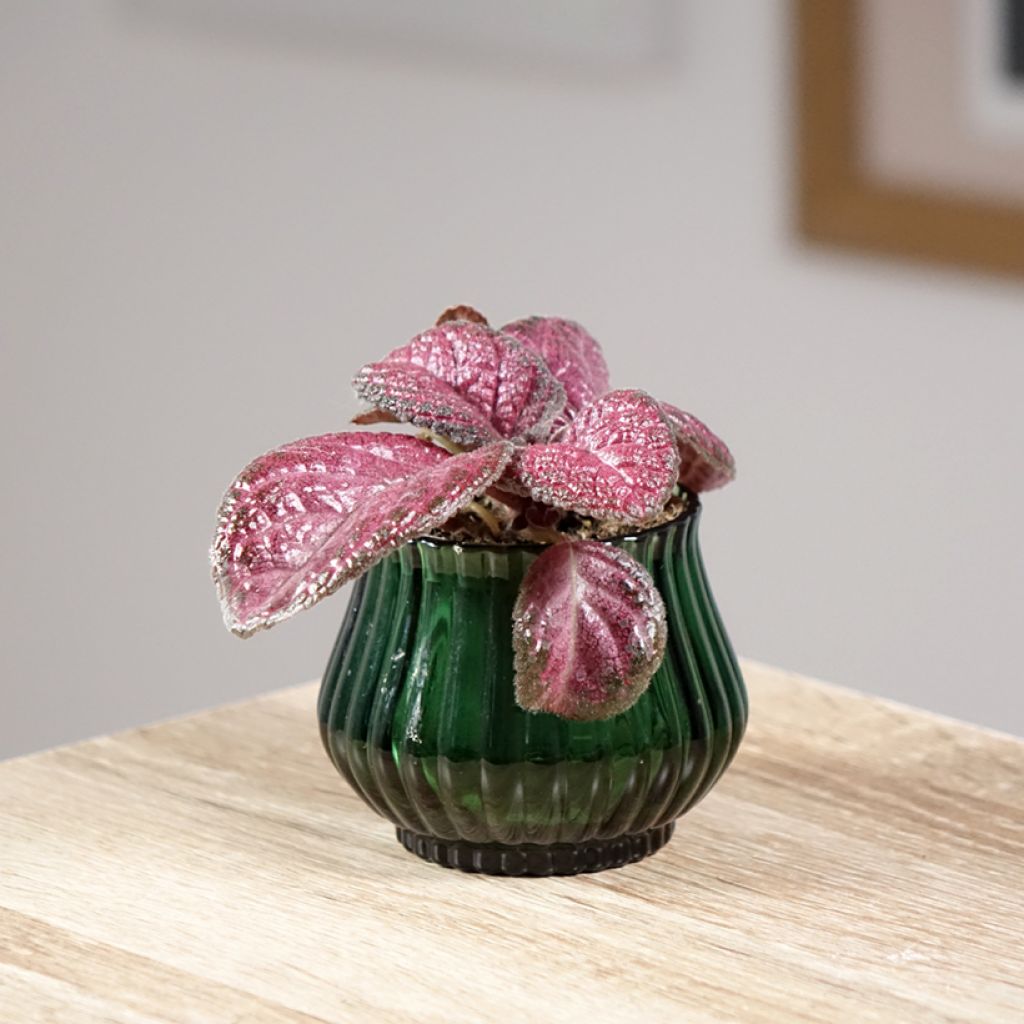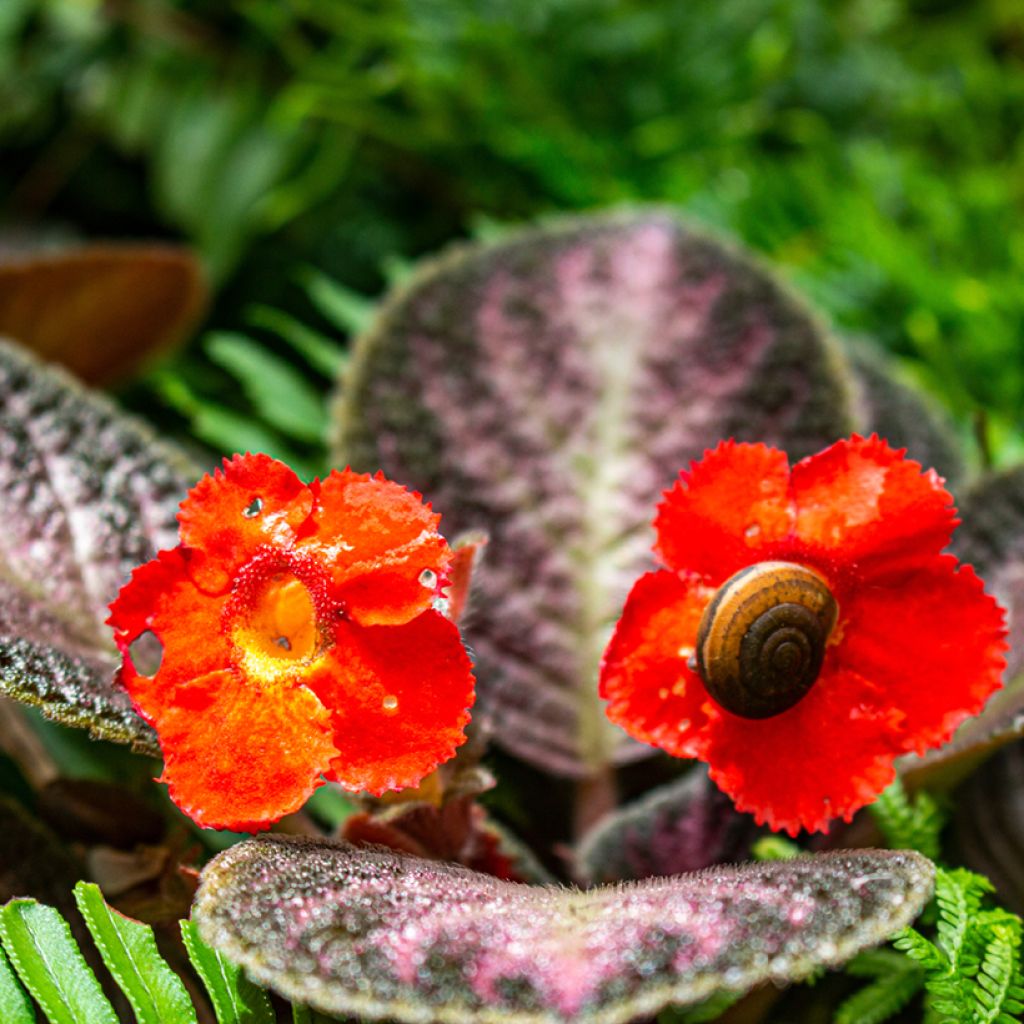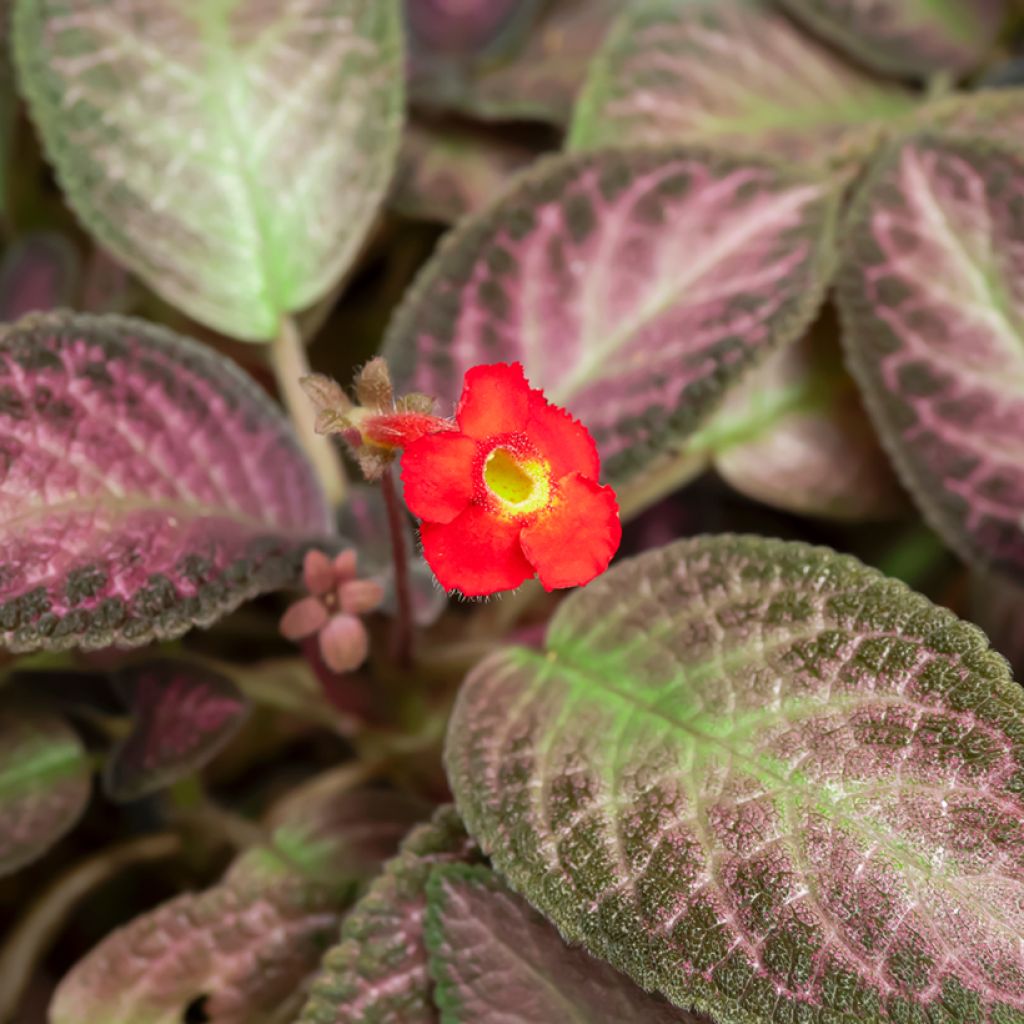

Episcia cupreata Malayan Gem - Flame violet


Episcia cupreata Malayan Gem - Flame violet


Episcia cupreata Malayan Gem - Flame violet


Episcia cupreata Malayan Gem - Flame violet


Episcia cupreata Malayan Gem - Flame violet
Episcia cupreata Malayan Gem - Flame violet
Episcia cupreata Malayan Gem
Flame violet
Special offer!
Receive a €20 voucher for any order over €90 (excluding delivery costs, credit notes, and plastic-free options)!
1- Add your favorite plants to your cart.
2- Once you have reached €90, confirm your order (you can even choose the delivery date!).
3- As soon as your order is shipped, you will receive an email containing your voucher code, valid for 3 months (90 days).
Your voucher is unique and can only be used once, for any order with a minimum value of €20, excluding delivery costs.
Can be combined with other current offers, non-divisible and non-refundable.
This plant carries a 30 days recovery warranty
More information
We guarantee the quality of our plants for a full growing cycle, and will replace at our expense any plant that fails to recover under normal climatic and planting conditions.
Description
The Episcia 'Malayan Gem', nicknamed the Flame Violet is a popular houseplant prized for its velvety, coppery-hued foliage, trailing habit, and tubular red flowers. It thrives particularly well in rooms like a living room or lounge where it can enjoy plenty of light. It is best displayed in a hanging basket or on a shelf to fully appreciate its qualities.
The Episcia 'Malayan Gem' is a stoloniferous perennial belonging to the Gesneriaceae family, much like the African Violet (Saintpaulia). It is also known as the Flame Violet. The 'Malayan Gem' variety has a trailing habit, with stems that spread and produce stolons followed by young plants, similar to strawberry plants. Its elliptical and velvety leaves typically measure between 4 and 10 cm in length. Highly decorative, they display shades of purplish-green with coppery, silvery or pinkish reflections and a purple underside. The growth of the Episcia 'Malayan Gem' is rapid, reaching a height of 15 to 20 cm and a spread of 25-30 cm at maturity. The flowering which lasts from spring to autumn takes the form of small, tubular, red flowers perfectly complementing the foliage. The name 'Episcia' derives from the Greek 'episkios' meaning 'shaded', referencing its natural habitat under forest canopies. The genus Episcia includes several species native to the tropical forests of Central and South America, particularly Mexico, Brazil, and Colombia. These plants thrive in humid, shaded environments, often in undergrowth where they form tapetums thanks to their stolons.
As an indoor plant, the Episcia 'Malayan Gem' prefers bright but indirect light, avoiding direct sunlight through glass, which could scorch its delicate leaves. High ambient humidity is beneficial though it is advisable to avoid wetting the foliage to prevent fungal diseases. The ideal temperature ranges between 18 and 24°C with a minimum of 15°C. A humus-bearing, fresh, light, and well-draining substrate is recommended, and watering should be regular, allowing the substrate to dry slightly on the surface between waterings.
The Episcia 'Malayan Gem' is ideally placed in a bright living room or bedroom where it adds an exotic and sophisticated touch. Pair it with textured ceramic or wicker pots for a tropical or bohemian look. Avoid overly dry spots such as near radiators, and opt for a location with filtered light to showcase it best. To create a harmonious combination, pair the Episcia 'Malayan Gem' with a Fittonia albivenis whose veined foliage offers a delicate contrast, and a Saintpaulia ionantha (African Violet). These complementary plants form a perfect trio, blending textures and colours in a refined tropical ambiance.
Report an error about the product description
Episcia cupreata Malayan Gem - Flame violet in pictures


Foliage
Plant habit
Flowering
Botanical data
Episcia
cupreata
Malayan Gem
Gesneriaceae
Flame violet
Cultivar or hybrid
Other Episcia - Flame violet
View all →Location
Location
Maintenance and care
Watering tips
Potting advice, substrates and fertilisers
Houseplant care
Disease and pest advice
Maintenance and care
This item has not been reviewed yet - be the first to leave a review about it.
Haven't found what you were looking for?
Hardiness is the lowest winter temperature a plant can endure without suffering serious damage or even dying. However, hardiness is affected by location (a sheltered area, such as a patio), protection (winter cover) and soil type (hardiness is improved by well-drained soil).

Photo Sharing Terms & Conditions
In order to encourage gardeners to interact and share their experiences, Promesse de fleurs offers various media enabling content to be uploaded onto its Site - in particular via the ‘Photo sharing’ module.
The User agrees to refrain from:
- Posting any content that is illegal, prejudicial, insulting, racist, inciteful to hatred, revisionist, contrary to public decency, that infringes on privacy or on the privacy rights of third parties, in particular the publicity rights of persons and goods, intellectual property rights, or the right to privacy.
- Submitting content on behalf of a third party;
- Impersonate the identity of a third party and/or publish any personal information about a third party;
In general, the User undertakes to refrain from any unethical behaviour.
All Content (in particular text, comments, files, images, photos, videos, creative works, etc.), which may be subject to property or intellectual property rights, image or other private rights, shall remain the property of the User, subject to the limited rights granted by the terms of the licence granted by Promesse de fleurs as stated below. Users are at liberty to publish or not to publish such Content on the Site, notably via the ‘Photo Sharing’ facility, and accept that this Content shall be made public and freely accessible, notably on the Internet.
Users further acknowledge, undertake to have ,and guarantee that they hold all necessary rights and permissions to publish such material on the Site, in particular with regard to the legislation in force pertaining to any privacy, property, intellectual property, image, or contractual rights, or rights of any other nature. By publishing such Content on the Site, Users acknowledge accepting full liability as publishers of the Content within the meaning of the law, and grant Promesse de fleurs, free of charge, an inclusive, worldwide licence for the said Content for the entire duration of its publication, including all reproduction, representation, up/downloading, displaying, performing, transmission, and storage rights.
Users also grant permission for their name to be linked to the Content and accept that this link may not always be made available.
By engaging in posting material, Users consent to their Content becoming automatically accessible on the Internet, in particular on other sites and/or blogs and/or web pages of the Promesse de fleurs site, including in particular social pages and the Promesse de fleurs catalogue.
Users may secure the removal of entrusted content free of charge by issuing a simple request via our contact form.
The flowering period indicated on our website applies to countries and regions located in USDA zone 8 (France, the United Kingdom, Ireland, the Netherlands, etc.)
It will vary according to where you live:
- In zones 9 to 10 (Italy, Spain, Greece, etc.), flowering will occur about 2 to 4 weeks earlier.
- In zones 6 to 7 (Germany, Poland, Slovenia, and lower mountainous regions), flowering will be delayed by 2 to 3 weeks.
- In zone 5 (Central Europe, Scandinavia), blooming will be delayed by 3 to 5 weeks.
In temperate climates, pruning of spring-flowering shrubs (forsythia, spireas, etc.) should be done just after flowering.
Pruning of summer-flowering shrubs (Indian Lilac, Perovskia, etc.) can be done in winter or spring.
In cold regions as well as with frost-sensitive plants, avoid pruning too early when severe frosts may still occur.
The planting period indicated on our website applies to countries and regions located in USDA zone 8 (France, United Kingdom, Ireland, Netherlands).
It will vary according to where you live:
- In Mediterranean zones (Marseille, Madrid, Milan, etc.), autumn and winter are the best planting periods.
- In continental zones (Strasbourg, Munich, Vienna, etc.), delay planting by 2 to 3 weeks in spring and bring it forward by 2 to 4 weeks in autumn.
- In mountainous regions (the Alps, Pyrenees, Carpathians, etc.), it is best to plant in late spring (May-June) or late summer (August-September).
The harvesting period indicated on our website applies to countries and regions in USDA zone 8 (France, England, Ireland, the Netherlands).
In colder areas (Scandinavia, Poland, Austria...) fruit and vegetable harvests are likely to be delayed by 3-4 weeks.
In warmer areas (Italy, Spain, Greece, etc.), harvesting will probably take place earlier, depending on weather conditions.
The sowing periods indicated on our website apply to countries and regions within USDA Zone 8 (France, UK, Ireland, Netherlands).
In colder areas (Scandinavia, Poland, Austria...), delay any outdoor sowing by 3-4 weeks, or sow under glass.
In warmer climes (Italy, Spain, Greece, etc.), bring outdoor sowing forward by a few weeks.






























